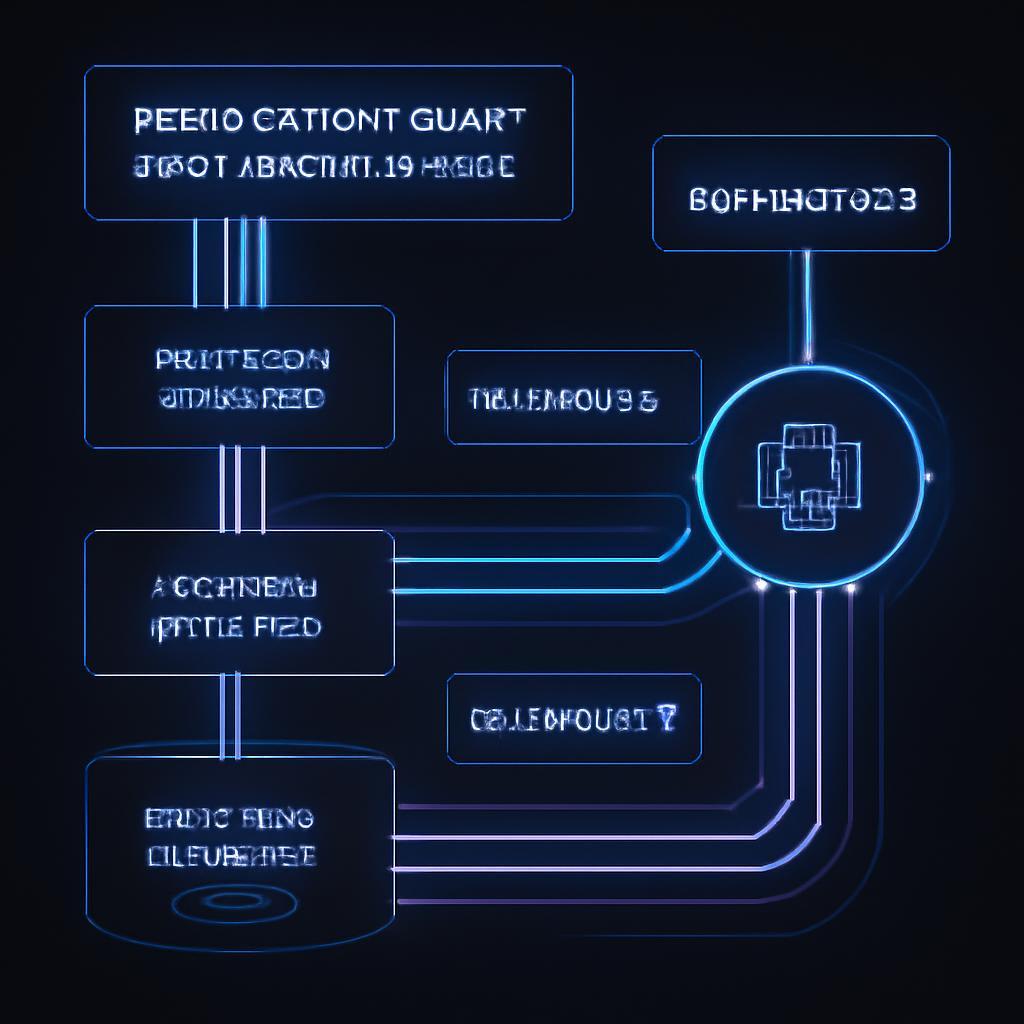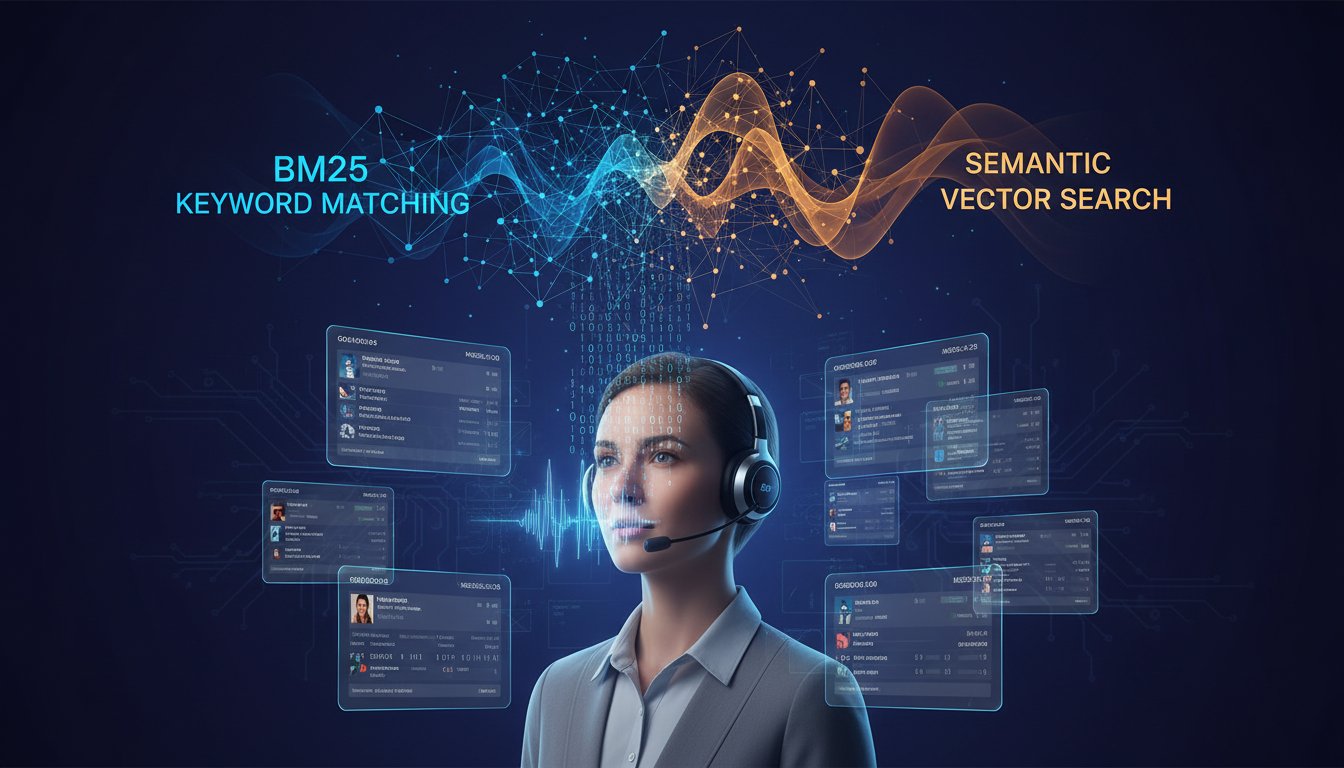Here’s how to build a Production-Ready RAG System
Introduction
The promise of generative AI is rapidly transforming industries, and at the heart of many practical enterprise applications lies Retrieval Augmented Generation (RAG). You’ve likely seen impressive demos or experimented with RAG’s ability to ground Large Language Models (LLMs) with specific, factual data, drastically reducing hallucinations and improving relevance. But there’s a world of difference between a clever RAG prototype and a system robust enough for the demands of production. You’re asking, “How do we actually build this for real-world enterprise use?” This guide is your definitive “here’s how.”
The journey to a production-ready RAG system is fraught with challenges that go far beyond simply connecting an LLM to a vector database. Organizations often grapple with ensuring data freshness and quality, optimizing retrieval relevance at scale, handling diverse data sources, implementing effective monitoring and evaluation, and ensuring the system is secure and compliant. Many find that initial successes in a controlled environment don’t translate easily to the complexities and scale of enterprise operations. The core challenge lies in building a system that is not only accurate but also reliable, scalable, maintainable, and cost-effective over its entire lifecycle. As leading researchers have highlighted, ensuring LLMs have “sufficient context” to avoid errors is a critical hurdle for enterprise RAG systems.
This comprehensive guide will equip you with the knowledge and strategies to navigate these complexities. We’ll deconstruct the architecture of a production-ready RAG system, diving deep into essential components like sophisticated data ingestion pipelines, optimized vectorization strategies, advanced re-ranking mechanisms for superior retrieval, and seamless LLM integration. We’ll explore crucial best practices, including rigorous evaluation frameworks, techniques for maintaining “sufficient context,” and the importance of continuous monitoring. Furthermore, we’ll touch upon the emerging tools and frameworks that are shaping the future of RAG development, drawing inspiration from best practices for building robust, production-grade systems and advancements in areas like agentic capabilities and novel frameworks designed to optimize search and generation.
By the end of this article, you will have a clear, actionable roadmap for designing, building, and deploying production-grade RAG systems. You’ll understand the architectural decisions, the key technologies, and the operational practices required to create AI solutions that deliver tangible business value. Whether you’re an AI engineer, a data scientist, or a technology leader, this guide will provide the insights needed to transform your RAG concepts into impactful, enterprise-ready realities.
Deconstructing the Production-Ready RAG Architecture
Building a RAG system that stands up to enterprise demands requires a well-thought-out architecture. It’s not just about linking components; it’s about how they interact, scale, and maintain integrity. Let’s break down the core pillars.
H3: Robust Data Ingestion and Preprocessing: The Foundation of Quality
The adage “garbage in, garbage out” has never been more pertinent than in RAG systems. The quality, relevance, and timeliness of your data directly dictate the performance of your AI. A robust data ingestion pipeline is therefore non-negotiable.
This pipeline must be capable of handling diverse data sources – from structured databases and unstructured documents (PDFs, Word docs, HTML) to real-time data streams from APIs. Effective preprocessing involves cleaning this data, removing noise, and standardizing formats. Crucially, chunking strategies play a vital role. Whether you opt for fixed-size chunks, sentence-based splitting, or more advanced semantic chunking, the goal is to create meaningful data segments that provide adequate context for retrieval without overwhelming the LLM. Poor chunking can lead to fragmented information and irrelevant retrieved contexts.
Furthermore, meticulous metadata extraction during ingestion (e.g., source, creation date, author, keywords) is essential. This metadata becomes invaluable for filtering results, improving search relevance, and enabling traceability in your RAG system.
H3: Strategic Vectorization and Efficient Vector Databases
Once your data is preprocessed and chunked, it needs to be transformed into a format that similarity search algorithms can understand: vector embeddings. The choice of embedding model is critical. Options range from general-purpose models (e.g., Sentence-BERT, OpenAI Ada) to domain-specific or fine-tuned models that better capture the nuances of your particular data. Experimentation is key to finding the model that yields the best retrieval performance for your use case.
These embeddings are then stored and indexed in a vector database (e.g., Pinecone, Weaviate, Milvus, Chroma). A production-ready vector database must offer scalability to handle potentially billions of vectors, low-latency retrieval, and advanced querying capabilities, including metadata filtering and hybrid search (combining semantic similarity with traditional keyword search). As some industry analyses suggest, abstracting the vectorization process itself can significantly accelerate the deployment of AI and RAG solutions by simplifying this complex step.
H3: Advanced Retrieval Mechanisms: Beyond Simple Similarity Search
Basic semantic search, which retrieves the N most similar chunks to a query, is often insufficient for complex enterprise scenarios. Production-ready RAG systems employ more sophisticated retrieval strategies.
Re-ranking mechanisms are paramount here. After an initial retrieval set is fetched based on vector similarity, a secondary re-ranking model (e.g., a cross-encoder or a dedicated re-ranking API like Cohere Rerank) can be used to re-order these results based on a more nuanced understanding of relevance to the query. This significantly improves the quality of context passed to the LLM. Research and practical applications consistently show that effective re-ranking is a key differentiator in RAG performance.
Other advanced techniques include query transformations, such as expanding queries with synonyms or breaking down complex questions into sub-queries. Contextual retrieval, which aims to better understand user intent and the broader conversational context, also plays an increasingly important role in delivering truly relevant information.
H3: Seamless and Controlled LLM Integration
The final step in the RAG pipeline is presenting the retrieved context to an LLM for answer generation. The choice of LLM itself is a major consideration, balancing factors like performance on specific tasks, context window size, inference speed, and cost. Some RAG applications may benefit from smaller, fine-tuned models, while others might require the power of large frontier models.
Prompt engineering is an art and science in RAG. The prompt must clearly instruct the LLM on how to use the provided context, how to respond if the context is insufficient, and the desired output format. Effectively managing the LLM’s context window is also crucial; techniques like context summarization or selecting only the most relevant snippets might be necessary if the retrieved information exceeds the window limit.
Finally, for enterprise applications, citing sources and ensuring traceability are vital. The RAG system should be able to indicate which retrieved documents or chunks contributed to the generated answer, enhancing trust and allowing for verification.
Best Practices for Building Resilient and Reliable RAG Systems
Beyond a solid architecture, certain best practices are essential for ensuring your RAG system is not just functional but also robust, reliable, and maintainable in a production environment.
H3: Ensuring “Sufficient Context” and Mitigating Hallucinations
A primary goal of RAG is to reduce LLM hallucinations by grounding them in factual data. However, if the retrieved context is poor, irrelevant, or insufficient, hallucinations can still occur. As research from entities like Google emphasizes, ensuring the LLM has “sufficient context” is critical.
Strategies to achieve this include iterative retrieval, where the system might perform multiple retrieval steps if the initial context is deemed inadequate. Context summarization before feeding it to the LLM can help distill the most important information. Moreover, robust prompt engineering should guide the LLM to indicate when the provided context doesn’t contain the answer, rather than forcing a guess. Regularly analyzing retrieval quality and its impact on answer factuality is key.
H3: Implementing Comprehensive Evaluation and Monitoring
You cannot improve what you cannot measure. A comprehensive evaluation and monitoring framework is crucial for production RAG systems. Key RAG-specific metrics include retrieval precision and recall (is the right information being fetched?), context relevance, answer faithfulness (does the answer accurately reflect the source?), and answer relevance to the query. End-to-end latency is also a critical performance indicator.
Establish human-in-the-loop (HITL) evaluation pipelines for quality assurance, especially in the early stages or for critical applications. Automated monitoring should track data drift (changes in input data characteristics), performance degradation over time, and operational costs. Logging all requests, retrieved contexts, generated responses, and user feedback is invaluable for debugging, continuous improvement, and identifying areas for optimization.
H3: Scalability, Performance, and Cost Optimization
Enterprise RAG systems must be designed for scale. Each component – data ingestion, vector database, retrieval services, and LLM serving – should be horizontally scalable to handle increasing loads. Implement caching strategies for frequently accessed data or common queries to reduce latency and computational cost.
Continuously optimize embedding generation and retrieval speeds. This might involve choosing more efficient embedding models, optimizing vector database indexing, or refining retrieval algorithms. A significant operational aspect is managing LLM API costs. This involves selecting cost-effective models for the task, optimizing prompt lengths, and potentially batching requests. A careful balance between performance, accuracy, and cost is always necessary.
H3: Security, Compliance, and Responsible AI
Security and compliance are non-negotiable in enterprise settings. Implement robust data privacy measures and access controls throughout the RAG pipeline, ensuring that only authorized users or processes can access sensitive information. If your RAG system handles personally identifiable information (PII) or other sensitive data, ensure it complies with relevant regulations like GDPR, HIPAA, etc.
Address potential bias in both the retrieval process (e.g., biased data sources leading to skewed retrieval) and the generation process (e.g., LLM biases). Strive for fairness and transparency in how the system operates. Implementing responsible AI principles throughout the design and operational lifecycle of your RAG system builds trust and mitigates risks.
Leveraging Modern Tools and Frameworks for RAG Development
The RAG landscape is evolving rapidly, with a growing ecosystem of tools and frameworks designed to simplify and accelerate development.
H3: Orchestration Frameworks for RAG Pipelines
Frameworks like LangChain and LlamaIndex have become popular for prototyping and building RAG applications. They offer pre-built components and abstractions for common RAG tasks, such as data loading, chunking, embedding, vector store interaction, and LLM chaining. While incredibly useful for rapid development, carefully consider their suitability for complex, large-scale production deployments, where you might require more granular control or encounter performance bottlenecks that necessitate custom solutions. The choice often comes down to a trade-off between development speed and operational robustness.
H3: Emerging Specialized RAG Platforms and APIs
The market is seeing a rise in specialized RAG platforms and APIs that offer more opinionated, end-to-end solutions or powerful building blocks. For instance, companies like Mistral AI are launching APIs that facilitate the creation of AI agents with inherent RAG capabilities. Open-source stacks like Morphik are emerging, specifically targeting document intelligence use cases with RAG. These tools can provide optimized components, managed infrastructure, and features tailored for production environments, potentially reducing the development burden for certain types of RAG applications.
H3: The Role of MLOps in Production RAG
Treating your RAG system as a machine learning system is crucial for production success. This means embracing MLOps (Machine Learning Operations) practices. Implement robust version control for your data (datasets and vector stores), code (ingestion scripts, retrieval logic, application code), and models (embedding models, re-rankers, LLMs).
Establish CI/CD (Continuous Integration/Continuous Deployment) pipelines to automate the testing and deployment of updates to your RAG system. This ensures that changes can be rolled out reliably and quickly. Comprehensive experiment tracking and model management are also vital for comparing different approaches, monitoring performance, and managing the lifecycle of your AI components.
The Evolving Landscape: Agentic RAG and Future Directions
The field of RAG is dynamic, with ongoing research and development pushing its boundaries. Staying aware of these trends is key to future-proofing your AI strategy.
H3: Understanding Agentic RAG: Towards More Dynamic Systems
A significant evolution is the move towards Agentic RAG. As highlighted in recent discussions and research, this involves making RAG systems more agent-like and dynamic, moving beyond the traditional static retrieve-then-generate paradigm. Agentic RAG systems can perform multi-step reasoning, dynamically decide when and what information to retrieve, and even use other tools or APIs to gather or process information.
This approach allows RAG systems to tackle more complex queries, engage in more sophisticated problem-solving, and interact more intelligently with data sources. It represents a shift towards AI systems that are not just information retrievers but active information seekers and processors.
H3: Innovations in Retrieval and Generation
Research continues to yield innovations in both the retrieval and generation aspects of RAG. New frameworks, such as the conceptually interesting “s3” RAG framework that aims to decouple search from generation or train search agents with minimal data, point towards more efficient and adaptable architectures. There’s a constant push for more advanced re-ranking mechanisms, better understanding of “sufficient context”, and techniques to make LLMs more adept at synthesizing information from diverse, sometimes conflicting, sources.
Vectorization itself is also seeing advancements, with a focus on creating more nuanced and context-aware embeddings. The goal is always to improve the relevance and quality of information fed to the LLM, thereby enhancing the final output’s accuracy and utility.
H3: The Ongoing Debate: RAG’s Enduring Importance
While some discussions ponder whether ever-larger and more capable foundation models might eventually render RAG obsolete, the consensus among many experts, including figures like Reid Hoffman, is that RAG will remain crucial. Foundation models, despite their vast knowledge, are inherently limited by their training data’s cutoff point and can struggle with highly specific, proprietary, or rapidly changing information.
RAG’s strength lies in its ability to ground LLMs in verifiable, up-to-date, and domain-specific external knowledge. This makes it an indispensable tool for enterprise AI, where accuracy, trustworthiness, and the ability to cite sources are paramount. The future likely involves an even tighter synergy between advanced foundation models and sophisticated RAG techniques.
Conclusion
Building a production-ready RAG system is a multifaceted endeavor, moving far beyond simple demos. It requires careful architectural planning, robust data handling, advanced retrieval strategies, rigorous evaluation, and an eye on the evolving landscape of AI. From establishing a solid foundation with quality data ingestion and strategic vectorization, to implementing sophisticated re-ranking, ensuring sufficient context, and considering the power of Agentic RAG, each step is crucial for enterprise success.
Mastering these elements empowers you to transform the potential of RAG into real-world, reliable AI solutions that drive significant business value. Now that you have a clearer understanding of how to approach building a production-ready RAG system, the next step is to start architecting and implementing these strategies within your organization.
CTA
Continue your learning journey by exploring our other deep-dive articles on specific RAG components, advanced AI model integration, and emerging AI trends right here on ragaboutit.com. Have questions, insights, or your own experiences to share? Join the conversation in the comments below – we’d love to hear from you!




